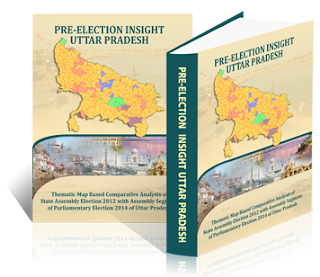Data visualization turns a boring report into aesthetically pleasing visuals, thereby making it easy to recognize patterns and find the exceptions.
We understand and retain information better when we can visualize our data. With our decreasing attention span (8 minutes), and because we are every now and then exposed to new or several information, it is important that we present a report in a quick and visual way.
Patterns or insights may go unnoticed in a data spreadsheet. But if we put the same information on a pie chart, the insights become clear.
It consolidates data into one collective, illustrative graphic. Initially, data visualization has been used for quantitative work but ways to represent qualitative work have shown to be equally as effective.
Let's take a look at how Indiastat represented the whole Jammu & Kashmir Election in a beautiful visual presentation.
Now if the visualization above was presented in it's original format with tables and spreadsheets then it might have taken us more than a hundred pages to present the same information.
This is the beauty of of data visualization although there is a lot of hard work involved in creating such visually magnificent visualizations. There is a designing team, analytics team, GIS team and a research team involved in creating such a presentation.
As we say "Rome was not built in a day", it took us several weeks to compile all the data we had in spread sheets and was followed by planning, designing, multiple reviews, rejections and experiments.
Use of Thematic Maps in Data Visualization
"A thematic map is a type of map especially designed to show a particular theme connected with a specific geographic area. These maps can portray physical, social, political, cultural, economic, sociological, agricultural, or any other aspects of a city, state, region, nation, or continent".
We have published several books using thematic maps which is a visual boon to the readers.
Visit us and get the most relevant and highly researched data reports based on socio- economic factors.




